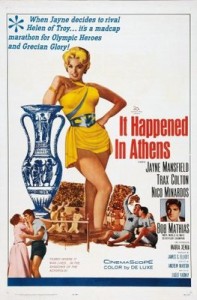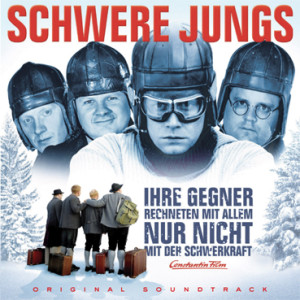And so it has come to this – Almaty, Kazakhstan and Beijing, China are the two remaining candidate cities to host the 2022 Olympic Winter Games. Almaty was formerly known as Alma-Ata when Kazakhstan was a Soviet Republic, and was known as Verniy in the years before the Bolshevik Revolution.
Beijing is an interesting choice for a number of reasons. First of all, Beijing hosted the 2008 Summer Olympics. No city has ever hosted both the Summer and Winter Olympics and many people think it would not be feasible to do so. However, if you have been to Beijing, and traveled to the Great Wall, you know that high mountains and very cold weather are only 50-70 km outside of the city. If you want to see steep mountains, try hiking up some sections of the Great Wall sometime.
Since it seems so unusual, has any city ever bid to host both the Summer and Winter Olympics prior to Beijing? In fact, it has happened and far more frequently than you would imagine.
We must discuss one aberration which are the 1956 Equestrian Games. The 1956 Olympics were held in Melbourne, Australia, which had strict animal quarantine laws and required the 1956 equestrian events to be moved to another country and city, which turned out to be Stockholm, Sweden. But there was a bid for that hosting responsibility, and Berlin, Los Angeles, Paris, and Rio de Janeiro also bid for the 1956 equestrian games.
So now we have three different types of possible Games bids – Summer, Winter, and Equestrian. One city, Stockholm, has sorta bid for all versions of the Olympics. It hosted the Summer Olympics in 1912, the Equestrian Olympics in 1956, bid for the Summer Games in 1952 and 2004, and put in a preliminary bid for the 2022 Winter Olympics, but withdrew that in January 2014 because of lack of governmental support.
Four cities also bid for the Summer and Equestrian Olympics – Berlin, Los Angeles, Paris, and Rio de Janeiro – all the losing bid cities for the 1956 Equestrian Games.
However, most importantly, 6 cities have bid for both the Summer and Winter Olympics, of which Beijing is only the most recent. Here is the full list of cities that have bid for both versions of the Olympics:
[table]
City,NOC,Ssn,Yr1,Yr2,Yr3,Yr4,Yr5
Beijing,CHN,S,2000,2008,,,
,,W,2022,,,,
Helsinki,FIN,S,1936,1940,1944,1952,
,,W,2006,,,,
Minneapolis,USA,S,1948,1952,1956,,
,,W,1932,,,,
Montréal,CAN,S,1940,1944,1956,1972,1976
,,W,1932,1936,1944,1956,
München,FRG,S,1972,,,,
,,W,2018,,,,
Torino,ITA,S,1908,,,,
,,W,2006,,,,
[/table]
No city has ever won the bid to host both the Summer and Winter Olympics, but all but one of the above cities have hosted one Olympics – Summer by Beijing in 2008, Helsinki in 1952, Montréal in 1976, München in 1972; and Winter by Torino in 2006. The lone exception is Minneapolis, Minnesota, which bid for three Summer Olympics and one Winter Olympics, but has yet to see Olympic Rings in their city.
Can Beijing do it? With only two cities, they should have at least a 50% chance, and their ratings by the IOC Evaluation Commission were far higher than those for Almaty. (Oslo, Norway, which recently turned the chance to bid, had the highest ratings of all.) The bid will be announced on 31 July 2015 at the IOC Session in Kuala Lumpur, Malaysia. Stay tuned.


